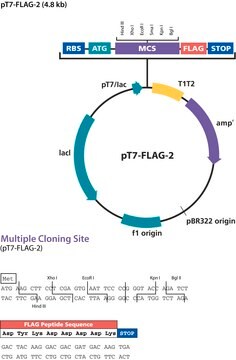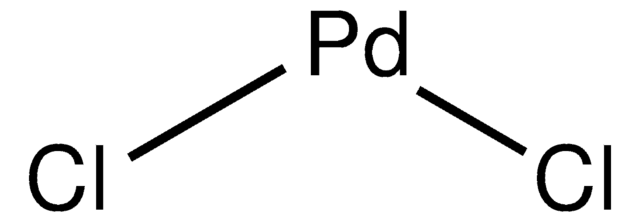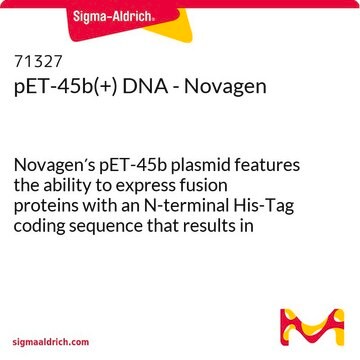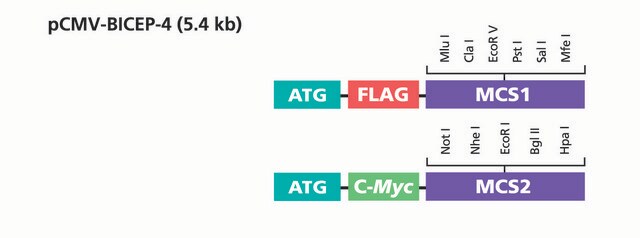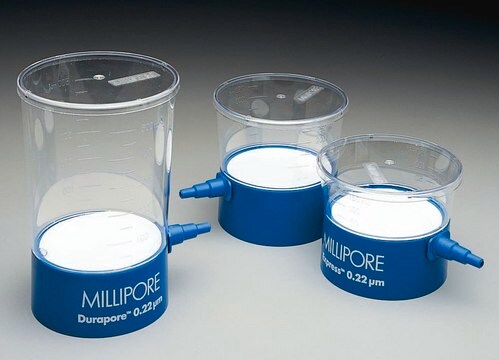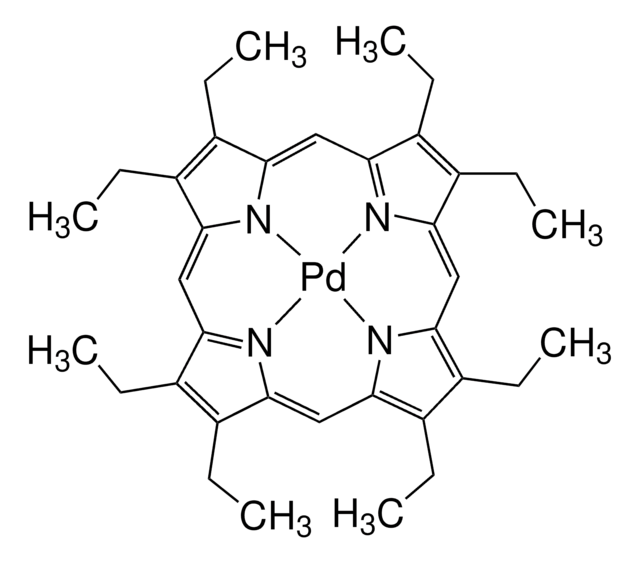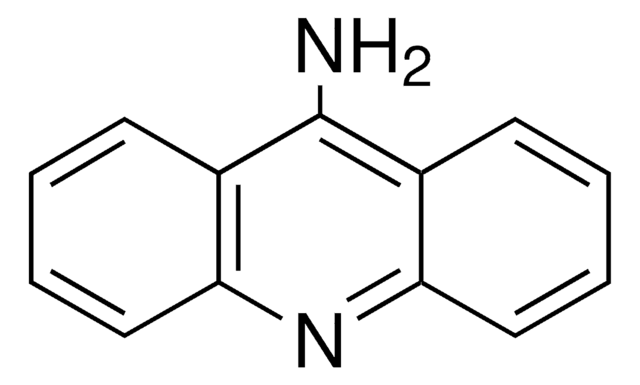OGS2828
PSF-OXB20-NH2-FLAG®-6HIS-EKT - N-TERMINAL FLAG® AND 6 HIS DUAL TAG BACTERIAL PLASMID
plasmid vector for molecular cloning
Sinonimo/i:
cloning vector, expression vector, molecular cloning vector, plasmid, plasmid vector, snapfast vector, vector
About This Item
Prodotti consigliati
Ricombinante
expressed in E. coli
Tag
6-His tagged
FLAG® tagged
Forma fisica
buffered aqueous solution
PM
size 4991 bp
Selezione batterica
kanamycin
Origine di replicazione
pUC (500 copies)
Clivaggio proteico
EKT
Posizione del tag peptidico
N-terminal
Promotore
Promoter name: OXB20
Promoter activity: constitutive
Promoter type: bacterial
Gene reporter
none
Condizioni di spedizione
ambient
Temperatura di conservazione
−20°C
Descrizione generale
About the Peptide Tag:This plasmid contains an n-terminal Hexa-Histidine (6His) affinity tag that can be fused to a gene of interest to allow protein detection and/or purification. The sequence of the tag is: HHHHHH. This plasmid also contains a secondary Flag protein tag. The sequence of this tag is: DYKDDDDKWe provide a range of dual peptide tag plasmids. This is because some peptide tags provide specific biological properties (e. g., small molecule affinity new epitopes solubility or protein secretion) that are not provided by others.
About the Cleavage Tag: This plasmid also encodes a protease cleavage site that is designed to be positioned between your gene of interest and the tag to allow the removal of the tag following protein purification or isolation. This plasmid contains a EKT cleavage tag. The protein sequence of the cleavage tag is: DDDDK. Enterokinase (EKT) protease cleaves after the Lysine residue. It can cleave at other basic residues but this is dependent on protein confirmation. If a proline follows the site it will not cut. None of our products contain a proline after the site.
Promoter Expression Level: This plasmid contains a constitutive bacterial promoter that does not require induction. It is the strongest bacterial promoter we sell and this can cause solubility and expression problems with some proteins. We also offer a range of other bacterial promoters that are compatible with this plasmid and are available on request.
Sequenza
Risultati analitici
Note legali
Prodotti correlati
Codice della classe di stoccaggio
12 - Non Combustible Liquids
Punto d’infiammabilità (°F)
Not applicable
Punto d’infiammabilità (°C)
Not applicable
Certificati d'analisi (COA)
Cerca il Certificati d'analisi (COA) digitando il numero di lotto/batch corrispondente. I numeri di lotto o di batch sono stampati sull'etichetta dei prodotti dopo la parola ‘Lotto’ o ‘Batch’.
Possiedi già questo prodotto?
I documenti relativi ai prodotti acquistati recentemente sono disponibili nell’Archivio dei documenti.
Articoli
Learn more about relevant restriction site functions in the SnapFast™ plasmid system. All DNA sections are pre-screened, and where possible modified, to remove any of the restriction sites found within the core SnapFast plasmids to maintain their flexibility.
A range of forward and reverse sequencing primers that allow you to sequence any insert that you make into a particular position within any plasmid. Where possible, the binding sites for each of these primers is conserved.
Il team dei nostri ricercatori vanta grande esperienza in tutte le aree della ricerca quali Life Science, scienza dei materiali, sintesi chimica, cromatografia, discipline analitiche, ecc..
Contatta l'Assistenza Tecnica.